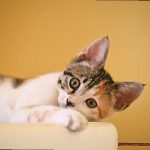Cats are undeniably adorable creatures that bring us endless joy. However, as much as we love them, there’s one thing about cat ownership that can be a real pain in the litter box – their poop.
Dealing with cat poop can be a daunting task, especially if you’re not sure what to do with it. But fear not. There are plenty of effective solutions out there to help you manage your feline friend’s feces.
In this blog post, we’ll dive into the nitty-gritty of cat poop management. From exploring different types of litter and their unique benefits to discussing alternatives to traditional litter that may work better for your kitty, we’ve got you covered.
We’ll also touch on the importance of regularly scooping your cat’s litter box to keep your home smelling fresh and clean. Trust us, no one wants a stinky house.
But wait, there’s more. We’ll also discuss the potential health concerns that can arise from improper cat poop disposal and how to avoid them. Because let’s face it, nobody wants to deal with a sick kitty (or human).
Whether you’re a seasoned cat parent or just starting out on your feline journey, this guide will provide you with all the knowledge and tools you need to keep your cat’s poop under control. So buckle up and get ready for some serious litter talk – it’s going to be purrfectly informative.
Clumping Litter: Pros and Cons
This type of litter is made of small clay particles that clump together when exposed to moisture, making it easy to scoop out the clumps and remove them from the litter box. However, as with any product, there are both pros and cons to using clumping litter.
Pros:
- Convenient and Easy to Clean – When it comes to cleaning up after your feline friend, clumping litter is a lifesaver. The clumps formed by the litter make it easy to scoop out the waste and dispose of it. This makes cleaning up a breeze for cat owners.
- Controls Odor – One of the biggest benefits of using clumping litter is its ability to control odor. As the litter clumps around the waste, it prevents the smell from spreading throughout the house. This means that your home will smell fresh and clean.
- Low-Dust – Another benefit of clumping litter is that it is low-dust. This can be beneficial for both cats and humans with respiratory issues, as it reduces the amount of dust in the air during cleaning.
Cons:
- Expensive – While clumping litter may be convenient, it can also be more expensive than other types of litter. It may not last as long as cheaper alternatives, which can be a drawback for those on a tight budget.
- Sticks to Litter Box – Another potential downside to using clumping litter is that the clumps can stick to the bottom of the litter box. This can make cleaning difficult and lead to unpleasant smells and bacteria buildup.
- Safety Concerns – There are also concerns about the safety of using clumping litter. Prolonged exposure to the dust created by this type of litter may be harmful to cats and humans. Additionally, if a cat ingests the litter while grooming itself, it could potentially cause intestinal blockages.
Non-Clumping Litter: Pros and Cons
One of the most important decisions you’ll make is choosing the right litter. With so many options available, it can be overwhelming to determine which one is right for your cat. In this article, we’ll explore non-clumping litter, its advantages, and its disadvantages.
Let’s start with the positives. One of the most significant benefits of non-clumping litter is its affordability. If you’re looking to save money, non-clumping litter may be the way to go. Another advantage is that it doesn’t stick to cats’ paws as much as clumping litter, making it less messy and easier to clean up.
In addition to being budget-friendly and less sticky, non-clumping litter can also be more environmentally friendly if made from natural materials like corn, wheat, or pine. And some cats simply prefer the texture of non-clumping litter over clumping litter.
However, there are also some drawbacks to non-clumping litter. One of the biggest disadvantages is that it doesn’t control odor as well as clumping litter since it doesn’t absorb urine. This can lead to unpleasant smells in your home and may require more frequent cleaning.
Another downside is that non-clumping litter needs to be changed more frequently than clumping litter because it doesn’t form clumps. This can be time-consuming and inconvenient for busy cat owners. Additionally, urine can spread throughout the litter box instead of forming a clump in one spot, making cleanup messier and more difficult.
Finally, non-clumping litter may not be suitable for cats with urinary tract issues since it doesn’t absorb urine as well as clumping litter does.
Cleaning the Litter Box Regularly
So it comes as no surprise that keeping their litter box clean is essential for their well-being and happiness. Not only does regular cleaning prevent unpleasant odors and dirty paws, but it can also help prevent behavioral issues in some cats.

So how often should you clean your cat’s litter box? The frequency of cleaning depends on the number of cats in your home and the type of litter you use. Generally, it’s recommended to scoop out solid waste every day and replace the litter entirely once a week. However, if your feline friend is especially finicky or has health issues affecting their urinary or digestive systems, they may require more frequent cleaning.
Regular cleaning of your cat’s litter box has several benefits beyond just keeping a fresh scent in your home. It prevents the growth of harmful bacteria and other organisms that can cause infections or illnesses in your cat. It also helps identify any potential health issues early on, such as changes in their stool or urine that may indicate an underlying problem. By maintaining a clean litter box, you can ensure your cat’s comfort and health.
When it comes to cleaning the litter box, there are a few things to keep in mind to protect both you and your furry friend. First, use gloves and a mask to avoid any potential hazards. Second, empty the litter box completely and wash it with soap and water before refilling it with fresh litter. And finally, consider using unscented litter, as some cats find scented litters overwhelming and can cause respiratory issues.
Enzymatic Cleaners for Urine and Feces Stains
They’re stubborn, difficult to remove, and can leave a lingering odor that’s hard to shake. Luckily, there’s a solution that’s both simple and effective: enzymatic cleaners.
Enzymatic cleaners are specifically designed to tackle the proteins found in urine and feces, making them the perfect solution for pet stains. Unlike other cleaners that simply mask the odor, enzymatic cleaners target the source of the stain and odor, eliminating it completely.
When choosing an enzymatic cleaner, make sure to select one that’s specifically designed for pet stains. These cleaners are formulated to work on the unique proteins found in cat urine and feces, which can be more challenging to remove than other types of stains.
It’s important to note that enzymatic cleaners require some patience. You need to let the cleaner sit on the stain for the recommended amount of time before wiping it away. But trust us when we say it’s worth the wait – enzymatic cleaners are incredibly effective at removing even the toughest stains and odors.
But here’s the best part – enzymatic cleaners don’t just remove stains and odors. They can also help prevent cats from returning to the same spot to do their business again. This is because they break down the proteins that cats use to mark their territory, which can discourage them from using the same spot repeatedly.
Deodorizers to Mask Unpleasant Smells
Fortunately, there are several deodorizing options available to help mask the smell and keep your home smelling fresh.
First on our list is baking soda, a natural and affordable option that is easily available in most households. It works by absorbing odors and can be sprinkled over the litter or mixed with your regular litter to give it an extra boost.
Another highly effective deodorizer is activated charcoal. This substance is highly porous and can absorb moisture and eliminate odors. Simply place it in a small container near the litter box to absorb any unpleasant smells.
If you prefer a scented option, then scented litter can be a good choice. There are various scents available such as lavender, citrus, and pine that can help mask the odor of cat poop. However, it is important to note that some cats may not like scented litter and may prefer unscented options.
For those who want a more specialized solution, there are deodorizing sprays designed specifically for use in litter boxes. These sprays contain enzymes and natural bacteria that break down odor molecules and eliminate them completely.
Last but not least, keeping the litter box clean and scooping out waste regularly is crucial in preventing and eliminating unpleasant odors. A dirty litter box can quickly become a breeding ground for bacteria and cause strong smells.
Automatic Litter Boxes for Self-Cleaning
One of the most significant advantages of automatic litter boxes is that they require less maintenance than traditional litter boxes. The automated scooping mechanism removes waste from the litter box without any manual effort, making it a perfect solution for busy cat owners. It’s also great for households with multiple cats, saving time and energy in cleaning up after them.
Another benefit of automatic litter boxes is odor control. With the timely removal of waste, there’s little chance for bacteria to develop, resulting in a fresher smelling home. This can be especially beneficial if you don’t have much space or have guests over often.
In addition to convenience and odor control, automatic litter boxes also improve hygiene by keeping the litter box clean at all times. This is particularly important for cats with health issues like urinary tract infections, as a dirty litter box can exacerbate these problems. By keeping the litter box clean and free of waste, an automatic litter box can help prevent health issues and keep your cat healthy and happy.
However, before purchasing an automatic litter box, it’s essential to consider your cat’s preferences. Some cats may be scared or intimidated by the noise or movement of the automated scooping mechanism. Additionally, some cats may prefer specific types of litter or may not like the feel of the automated litter box.
Factors to Consider When Choosing the Best Option for Cat Poop Management
The health of your cat should be your top priority when choosing a litter box option. You need to be careful while selecting a litter that is safe for your cat and doesn’t cause any harm to their health. Avoid litters that contain harmful chemicals or fragrances.
Another vital aspect to consider is the environment you live in. If you have limited space in your house or apartment, consider alternative options like disposable litter boxes or flushable litter. These options take up less space and can be easily disposed of, making them ideal for small living spaces.
Choosing the right type of litter is equally crucial. Some cats prefer clumping litter, while others prefer non-clumping litter. It’s important to experiment with different types of litter to find what works best for your cat. Additionally, choose a litter that is easy to clean and doesn’t produce too much dust.
Cleaning frequency is another factor to keep in mind while choosing a litter box option. Some litters require daily cleaning, while others can go for several days without cleaning. If you have multiple cats, you may need to clean the litter box more frequently. Make sure you choose an option that fits your schedule and lifestyle.
Lastly, cost is an essential consideration. While disposable litter boxes may seem convenient, they can be more expensive in the long run. On the other hand, traditional litter boxes require regular replacement of litter which can add up over time as well. Consider your budget and choose an option that fits within it.
Tips for Finding the Most Suitable Solution for Your Cat’s Waste Management Needs
Managing your cat’s waste can be a challenging task, but finding the right solution doesn’t have to be. Here are five sub-sections to consider when looking for the most suitable waste management solution for your furry friend.
Prioritize Your Cat’s Preferences
Every cat is different, and their litter box preferences vary. Some cats may prefer a specific type of litter or litter box, so observe your cat’s behavior and take note of their likes and dislikes. For example, if your cat has sensitive paws, they may prefer a softer litter. Additionally, some cats may not like enclosed litter boxes, while others may prefer them for privacy and control of odors.
Consider Your Own Preferences
While it’s essential to prioritize your cat’s needs, you’ll also want to choose a solution that is convenient and easy for you to maintain. Some litter boxes may require more frequent cleaning than others, while certain types of litter may be more difficult to scoop or dispose of. Consider how frequently you can clean the litter box and how easy it is to dispose of waste.
Keep Allergies and Sensitivities in Mind
Some types of litter may contain fragrances or chemicals that can irritate sensitive skin or respiratory systems in both cats and humans. Opt for natural or unscented litter if you or your cat has any allergies or sensitivities.
Think About the Environment
Traditional types of litter are not biodegradable and can contribute to landfill waste. Consider eco-friendly options such as recycled paper pellets or biodegradable corn-based litter. You can also reuse plastic bags instead of buying new ones for waste disposal.
Prioritize Hygiene and Cleanliness
Regularly scooping out waste, cleaning the litter box thoroughly, and providing fresh litter are essential for maintaining good hygiene and avoiding unpleasant odors. Neglecting these tasks can lead to potential health risks for both you and your cat. It’s important to prioritize hygiene and cleanliness when managing your cat’s waste.
Conclusion
In summary, managing cat poop may seem like a daunting task, but it doesn’t have to be. Armed with the right tools and knowledge, you can keep your home smelling fresh and your cat healthy and happy. To achieve this, there are several factors to consider when finding the best solution for your cat’s waste management needs.
Clumping litter is a popular choice as it is convenient and controls odor well. However, it can be expensive and potentially harmful if ingested by cats. On the other hand, non-clumping litter is affordable and less sticky but may not control odor as effectively. Regular cleaning of the litter box is crucial for maintaining good hygiene and preventing health issues in your cat.
Enzymatic cleaners work wonders in removing stains and odors while deodorizers like baking soda and activated charcoal can help mask unpleasant smells. Automatic litter boxes offer convenience but may not be suitable for all cats.
When choosing a waste management solution for your furry friend, prioritize their preferences while also considering any allergies or sensitivities, environmental impact, hygiene, cleanliness, and cost-effectiveness. By taking these factors into account, you can find the most suitable option that works best for both you and your feline companion.







